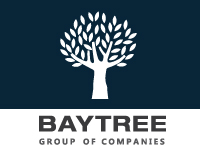CA
ON
한인을 위한 KOREAN JOB BANK
전화: 6476245886
4065 Chesswood Drive Toronto, ON
.jpg)
고려 오창우 한의원
전화: 416-226-2624
77 Finch Ave W #302, North York Toronto, ON

대형스크린,LED싸인 & 간판 - 대신전광판
전화: 416-909-7070
4065 Chesswood Drive Toronto, ON

조준상 (로열르페이지 한인부동산 대표)
전화: 416-449-7600
1993 Leslie St. Toronto, ON

1004열쇠
전화: 416-895-1004
4 Blakeley Rd. Toronto, ON

K-포차 ...미시사가(만두향프라자)
전화: 905-824-2141
169 DUNDAS ST. E. #7 Mississauga, ON

준비된 바이어 그룹 , BAYTREE 이너써클
전화: 416-226-5999
7030 Woodbine Ave. Suite 103 Toronto, ON

홍이표치과
전화: 647-985-0456
9625 Yonge St #4, Richmond Hill, ON Toronto, ON
1.jfif)
변호사 정찬수 법률사무소
전화: +82 2-536-1144
서울특별시 서초구 서초동 Toronto, ON
1.jfif)
스마트 디지탈 프린팅 - 인쇄 및 디자인
전화: 416-909-7070
4065 chesswood dr. Toronto, ON
.jfif)
부동산캐나다 (Korean Real Estate Post)
전화: 416-449-5552
1995 Leslie Street Toronto, ON
.jfif)
호남향우회 (토론토)
전화: 647-981-0404
7 Bishop Ave. #2411 Toronto, ON

It would be a place where all the visitors including me share the life stories and experiences through their activities,especially on life as a immigrant.
Why don't you visit my personal blog:
www.lifemeansgo.blogspot.com
Many thanks.
블로그 ( 오늘 방문자 수: 27 전체: 267,590 )
통합메가시티 10년 실적
lakepurity
2008-01-01
Amalgamation: 10 years later
ANDREW STAWICKI/TORONTO STAR FILE PHOTO
Volunteers at the East York town centre in February 1997 were among those bitterly opposed to amalgamation.
Email Story Email story
Print Print
Text Size Text Size Text Size Choose text size
Report Typo Report typo or correction
Email the author Email the author
iCopyright License this article
AddThis
Megacity politics in shambles 10 years later
Amalgamation: 10 years later
10 years in the life of the megacity
Former mayors look back in anger
Weird and wacky tales of the six old cities
It's been 10 years since the amalgamation of seven governments into one unified megacity of Toronto. Was this a good idea?
Yes
No
Undecided
Results | Past Polls
Speak Out
Former mayors look back in anger
Ten years after the storm, their take on the legacy of amalgamation
Controversial union promised savings – instead it set city on path to fiscal failure
Jan 01, 2008 04:30 AM
Royson James
CITY HALL COLUMNIST
Against great odds and in the face of trenchant hostility, the amalgamation of seven governments into one unified Toronto has survived its first decade. Barely.
Happy anniversary, megacity.
Never has a forced union been so universally detested and excoriated – every outflow, offspring or offshoot smeared with the "bastard" tag: unwanted, unloved, unappreciated. And yet, alive, if not well.
For those landed here after Jan. 1, 1998, it's impossible to comprehend the raw hatred that greeted the singularly most unpopular decision of a singularly most unpopular politician, one Mike Harris.
Led by former Toronto mayor John Sewell and his group Citizens for Local Democracy (C4LD), the opposition exploded, from 30 allies huddled at Lawrence Park Collegiate to more than 1,000 at weekly meetings.
The cities about to be banished to the woodpile of history held referendums on the same day. The province promised to ignore the results. Some 76 per cent of voters opposed merger, prompting the Star headline: "Mega No to megacity."
That night, Sewell and his forces held a triumphant rally at Massey Hall before embarking on a candlelit procession to Nathan Phillips Square, chanting "No means No."
Mayor Barbara Hall led another delegation to Queen's Park. In vain.
The cities (except North York) launched a constitutional challenge. It failed. Mike Harris cut off debate. The new city, one government from Etobicoke Creek to the Rouge River, Steeles Ave. to the lake, became law Jan. 1, 1998.
Some wounds are only now healing, 10 years later. And considering what it's been through, it's a miracle Toronto is still standing.
"It's been a real body blow to the city," says Sewell, still defiant. "I fear for the city's future."
"A disaster," adds MPP Michael Prue, East York's last mayor.
Kathleen Wynne, now education minister, was Sewell's right-hand person back then. Her analysis? "I've knocked on tens of thousands of doors since I got into provincial politics, both in 2002-2003 and 2006-2007, and I have yet to meet anyone who says they think the amalgamation of the city of Toronto was a good idea ... Maybe that's a lie. Maybe I've met two people."
What citizens remember is that taxes went up, transit fares jumped, their city hall moved downtown and they felt less connected to it.
Toronto was a likely candidate for amalgamation. But its protectors didn't see it coming.
Urbanists and planners flocked to the city to study its transit, the co-existence of its multicultural citizens and its two-tier government that thrived even as U.S. jurisdictions clung to tax-defined borders.
If anything, Toronto's intelligentsia hated the Metro government. It was big, less susceptible to ratepayer influence and had majority political representation from the suburbs of Scarborough, North York and Etobicoke.
But about three-quarters of services were already amalgamated under Metro. Citizens may have felt close to their city councillor, but it was the Metro councillor who was getting them to work on transit, sending out ambulances and police, setting the policies that helped build social cohesion.
So when Harris, fulfilling his tax-cut, less-government mandate, rode into town with a plan to eliminate a level of municipal government, it was logical to keep Metro and eliminate Scarborough, North York, York, Etobicoke and East York. The biggest fight since "Stop the Spadina Expressway" was on.
The idea did not infuriate everyone. Opponents hiss that the newspaper editorial boards and many other media were in favour. But others, like ex-mayor David Crombie, also saw value in it.
Proponents viewed amalgamation as part of a normal evolution that reduced the Toronto area to 13 municipalities by 1953, six by 1967. Others suggested one big Toronto would provide a citywide equity of services otherwise missing.
The province's position was that huge savings would be exacted. But once the entire Harris plan was unveiled – amalgamation plus a huge download of social services and an end to transit funding – opposition was cemented.
Ten years later, it's virtually impossible to determine which of Toronto's problems are the result of amalgamation, of downloading, or simply inevitable in any case.
The city talks of Queen's Park owing it $700 million to $1 billion. On the other hand, it got a $1 billion asset in Toronto Hydro, and the province took on $600 million in education costs.
What is irrefutable is that the city was set on a path to fiscal failure. Amalgamation was supposed to deliver three main benefits: savings, greater equity and more clout.
"Savings" were wrung from the system, all right: thousands of jobs cut in the first three years. But that wasn't sustainable. At the same time, more staff were hired for police and transit to cope with growth.
On equity, the megacity has been a big success, spreading the social safety net across the city. York, the poorest of the old municipalities, has benefited most.
Toronto has updated a property tax system that was outdated and unfair, and approved a progressive climate change plan that will have influence well beyond our city. The mayor's campaign for a new deal from senior governments has resonated across Canada, lending credence to Toronto's claims of clout.
But as an experiment in local democracy, merger has been a huge failure. The megacity's continued survival is a testament mainly to the efforts of a great civic workforce. Its creation was too hurried. Too much was heaped on its head.
What now? Do we de-amalgamate, as the school board is now pondering? A few diehards have always harboured such thoughts. But the former mayors and Metro chairs, except Prue, say going back is not an option. Better to have the province fix the fiscal mess by taking back social services costs and giving Toronto some breathing room.
Mayor David Miller has staked his own political survival on the province riding to the rescue.
Next spring, Ontario will release a report on reforms that might right the fiscal imbalance. Even then, it will be a challenge. Debt is manageable, but high. Residents have high expectations for enhanced services but low tolerance for higher taxes.
Twelve neighbourhood councils might be better than the four community councils we have now. And party politics would more clearly define the platform and expectations of city council.
But don't look for those changes soon. If there's no move toward de-amalgamation this council term, it's unlikely ever to find traction. By the 2010 election, more than half of the city council will be totally removed from the Metro days.
And Miller doesn't sound like a suicidal hero of the C4LD crowd. In solidifying the mayor's office and investing it with more power, he moves in the opposite direction.
Meanwhile, we can expect a slow evolution. The fight of this generation – a new deal from the province that removes social services costs – is closer than ever.
Ten years is a short time in the life of a city, too short for definitive judgment. A city-friendly provincial government has replaced one that lashed Toronto. The next 10 years can't possibly be worse.